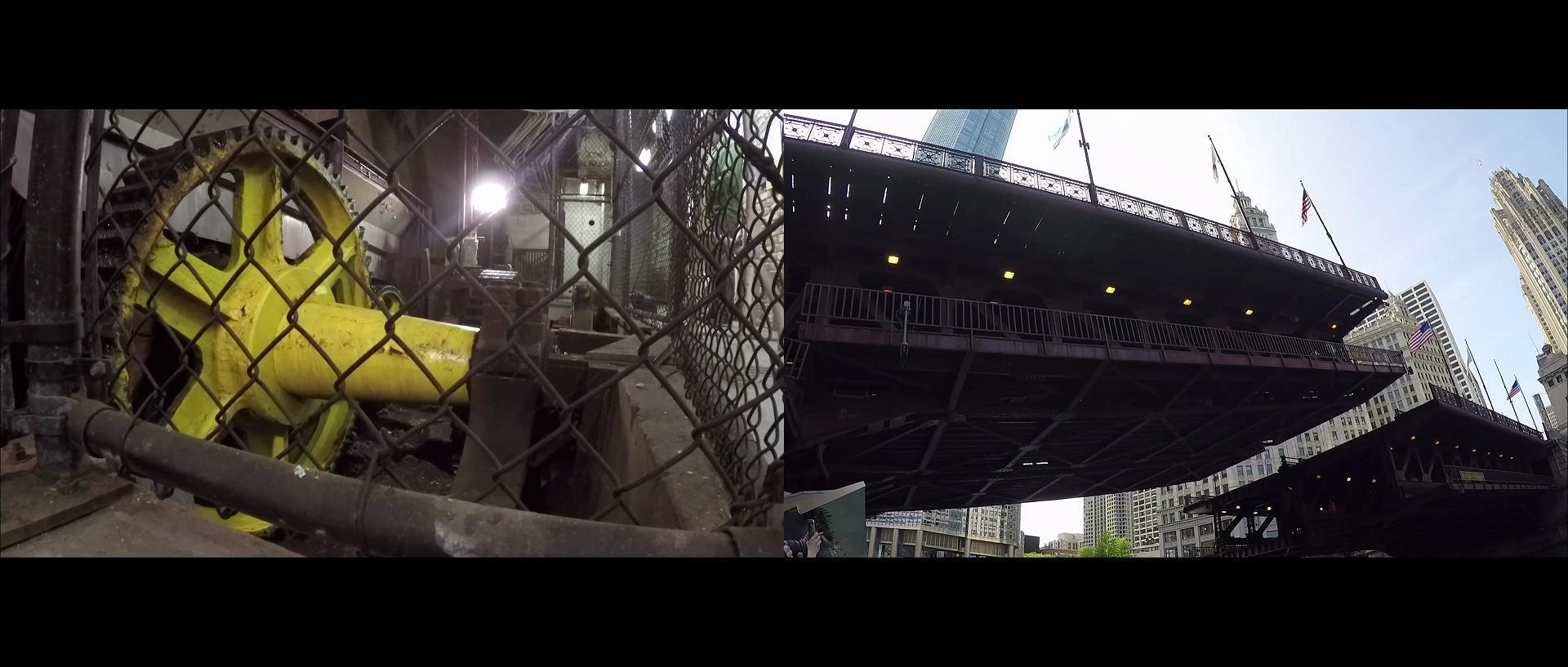One of the things Chicago is known for is it’s some what infamous river. The Chicago river (as beautiful as it is today) was once so sludged full of sewage and other waste that rats could run across the build-up on the surface. Humans, on the other hand, had to build bridges to travel to the other side. Because many large ships used to travel the river regularly, the bridges had to be capable of lifting out of the way for them to pass.
So how do you lift a bridge? Well, to completely simplify the amazing engineering that went into the 29 lift bridges in Chicago… you turn it into a see-saw. These bridges are balanced with gigantic counterweights that swing down into massive pits so that it only takes a small motor to do the lift. For instance, each ~4100 ton side of the Michigan Avenue Du Sable Bridge is lifted with only two 108 hp motors.
Recently myself and a couple people from NoiseFloor went out to record the sounds of the Michigan Avenue bridge lift for a job. What might be surprising to many is (aside from the constant clanging of warning bells) the entire process is relatively quiet from the outside. The bridge might moan and groan a bit, but nothing like what you might expect. It’s quite a site to witness such a large piece of infrastructure lift to the sky so quietly.
The lower rooms of the bridge-houses which contain the equipment used to perform the lift are a different story. We we’re lucky enough to have private access to one of these rooms during the lift to capture it all. I don’t want to give too much away, so have a listen!
[youtube https://www.youtube.com/watch?v=SCkWkUGPKOk]
Pretty cool, right? You’re hearing a few things here. First, the clanging of bells, warning drivers and pedestrians that a lift is coming and that Blues Brothers style jumps should be avoided. Second, you hear the massive pins that hold the double-decker bridge in place being drawn out, leaving the structure balancing freely. Third, the lift begins. The giant cogs begin to spin very quietly at first before rumbling up to speed. Fourth, the bridge bellows to a halt while a driver, apparently angry at the bridge, honks with Chicago passion.
This video contains a mix of all of the mics we used to record the bridge, inside and out. We went with a spaced pair of DPA 4006-TL mics for the exterior perspective. In the inside the machinery was recorded with a mid-side Oktava MK-012 arrangement, and two Barcus Berry 4000 contact mics. The DPAs did a great job of capturing the strong low resonance of the bridge, while the Oktavas and Barcus Berrys captured the details.
I hope to record some more bridges soon. All are very cool to see, but some are noisier than others. I’ve just got to find the one that hasn’t been greased up in a while 😉
Fun Fact: The one day we had private access to the bridge house, the bridge broke. The first time they attempted the lift, the bridge rose only a foot or so. Over the course of ~3 hours they tried time after time to lift it. Finally, just before rush hour, the bridge broke free from whatever was seizing it up and rose to the occasion. It was quite something seeing the engineers figure out the problem(s). I wouldn’t want to be in their position. If you think troubleshooting computer problems is hard… try fixing a broken Michigan Avenue.
